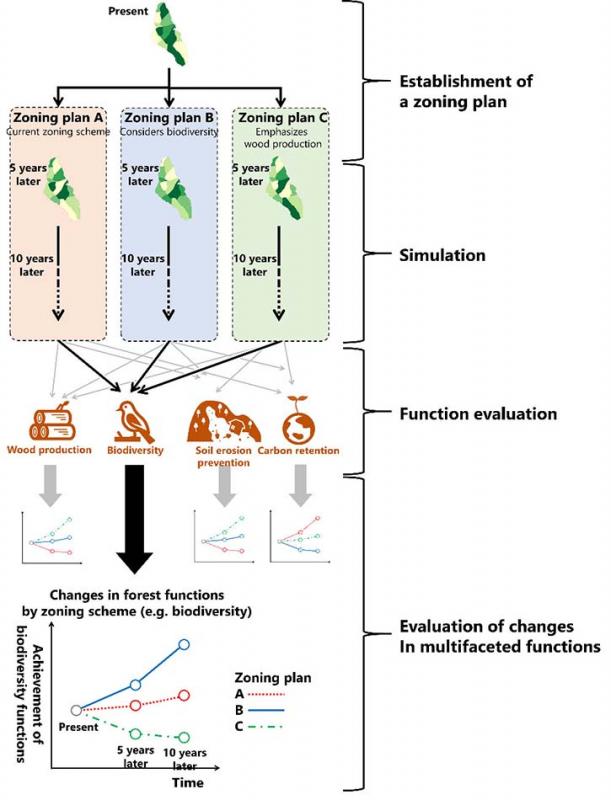Home > Research > Research Results > Research Results 2018 > Forest zoning can augment diverse forest functions
Update:November 20, 2018
Main content starts here.
Forest zoning can augment diverse forest functions
| Article title |
Decision Support System for Adaptive Regional-Scale Forest Management by Multiple Decision-Makers |
|---|---|
| Author (affiliation) |
Yusuke Yamada (a), Yuichi Yamaura (b) (a) Department of Forest Management, FFPRI, Tsukuba, Ibaraki, Japan. |
| Publication Journal |
Forests. 8(11): 453, November 2017, DOI:10.3390/f8110453( External link ) |
| Content introduction |
Local municipalities formulate regional forest administration plans (Municipal Forest Plan) based on regional forests subjected to zoning. In forestry, the term “zoning” refers to the allotment of prioritized functions to each forest plot with the purpose of clarifying the future vision and administrative policy for the forest. Zoning encourages forest owners to perform their operations (cutting, thinning, etc.) at specific times and locations, thereby augmenting the diverse functions of forests, including wood production, to benefit local communities as a whole. In this study, the authors constructed a model that estimates quantifiable effects of zoning on various forest functions in the future. This model combines a simulation model, which predicts when and where a forest owner performs forestry operations corresponding to zoning, and an estimation model, which quantifies the functions resulting from the operations. As a case study, the authors applied this model to a privately owned forest in the town of Ugo, Akita Prefecture. In addition to the current zoning scheme, a virtual zoning plan was established, which automatically assigned the priorities of wood production based on the state of the present forest and distribution of environmental factors. Prospective forest functions were predicted based on the respective models and compared. Consequently, the latter zoning scheme, rather than the former, was predicted to be more conducive to augmenting wood production and other publicly beneficial functions in the long term. In the future, the authors plan to conduct more case studies with the view of constructing a more practical system that actually contributes to zoning planning. Based on the assumption that forestry operations are performed under the respective zoning conditions, the future state of the forest is estimated. In each scenario, forest functions are evaluated. |
Copyright © Forest Research and Management Organization. All rights reserved.

